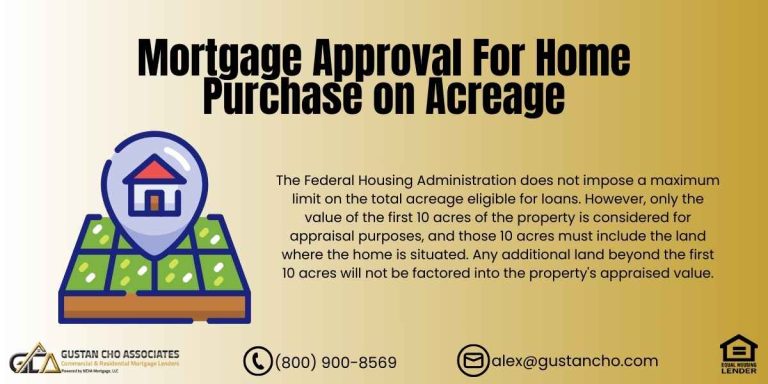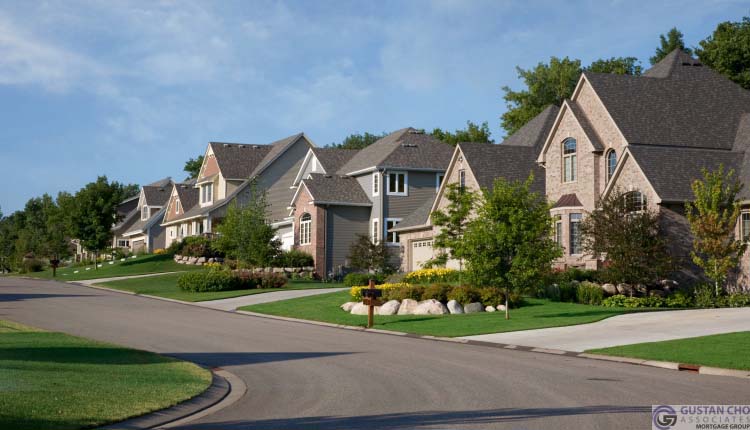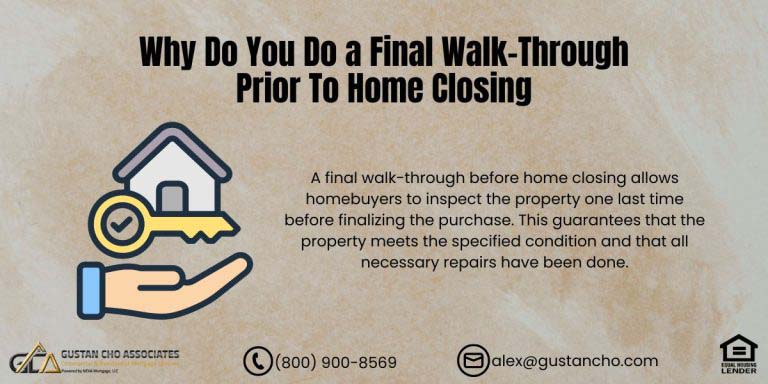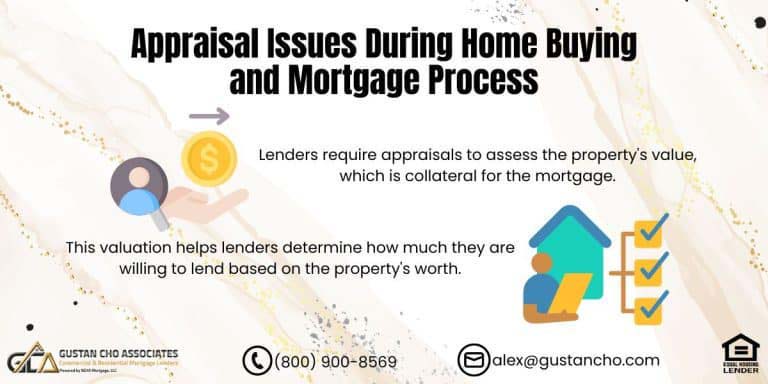Home Loan After Foreclosure: 2026 Waiting Period Guidelines and Options
Losing a home to foreclosure can feel like the end of the road. But the truth is, you can get a home loan after foreclosure. Many people who went through tough times have become homeowners again — sometimes sooner than expected.
This guide will explain everything you need to know about qualifying for a home loan after foreclosure, including updated waiting period rules for 2026, ways to rebuild credit, and how you can buy again with no waiting period through Non-QM loans offered by Gustan Cho Associates.
Can You Qualify for a Mortgage After Foreclosure?
Foreclosure is when a homeowner stops being able to make their mortgage payments, and the bank steps in to take back the house. It can be tough on your credit score and self-esteem, but remember, it’s not the end of the world, and things can improve over time.
Millions of borrowers have recovered, rebuilt their credit, and bought a new home. Lenders today understand that financial hardships happen — from job loss to medical issues to divorce. The good news is that there are several ways to qualify for a home loan after foreclosure, depending on the type of mortgage program you choose.
How Long Do You Have to Wait for a Home Loan After Foreclosure?
The waiting period is when you must wait before applying for a new mortgage after your foreclosure date is recorded in public records. Each loan program has different rules.
Here are the updated 2026 waiting period guidelines for major loan types:
| Loan Program | Waiting Period After Foreclosure | Notes / Exceptions |
| FHA Loan | 3 years | Starts from the foreclosure sale or deed transfer date |
| VA Loan | 2 years | Shorter wait for eligible veterans and service members |
| USDA Loan | 3 years | May approve sooner with strong credit and extenuating circumstances |
| Conventional (Fannie Mae/Freddie Mac) | 7 years | Starts from the completion date of foreclosure |
| Non-QM Loans | No waiting period | Flexible approval based on credit, down payment, and income |
That means if your foreclosure happened three or more years ago, you could already qualify for an FHA or USDA loan today. If you can’t wait that long, non-QM loans from Gustan Cho Associates can help you buy immediately after foreclosure.
Home Loan After Foreclosure Waiting Period — Check Eligibility
Find Your Foreclosure Completion Date (So You Know What You Qualify For)
What Is a Foreclosure and How It Affects You
A foreclosure happens when a bank or lender takes back your home because you’ve missed payments. It’s a big financial deal, but it doesn’t mean you’ll never be able to buy a house again. Dealing with foreclosure can significantly impact your credit score, resulting in a drop of around 100 to 160 points. That information will stick around on your credit report for seven years.
While lenders might see a foreclosure as a sign you’ve had money issues in the past, it’s good to remember it’s not a forever stain on your credit history. If you work on rebuilding your credit and save up for a down payment, you can get back on track to qualify for another home loan quicker than you might think.
How to Know When Your Waiting Period Starts
For most loan types, the waiting period starts from the date your foreclosure is officially recorded. Here’s how it works for different types of loans:
- FHA and USDA Loans: The waiting period begins from the date of the sheriff sale or court sale—this is considered a judicial process.
- Conventional Loans: The clock starts ticking from the date your name is removed from the property, which is typically tied to the date the foreclosure deed is recorded in public records.
It’s important to confirm your specific foreclosure date through public records to know exactly when you can reapply for a loan. Don’t worry—we’ll take care of verifying this information for you!
Deed-in-Lieu of Foreclosure and Short Sale: How They Compare
Some homeowners avoid full foreclosure through a deed-in-lieu of foreclosure or a short sale. These are alternatives that can shorten the waiting period for a new loan.
Deed-in-Lieu of Foreclosure
You voluntarily hand over your property to the lender instead of going through a full foreclosure.
Waiting periods:
- FHA: 3 years
- Conventional: 4 years
- VA: 2 years
- USDA: 3 years
Short Sale
A short sale happens when you sell your home for less than you owe, with the lender’s approval.
Waiting periods:
- FHA: 3 years
- Conventional: 4 years
- VA: 2 years
- USDA: 3 years
No matter which one you had, you can still qualify for a home loan after foreclosure or a similar credit event — especially with a lender that understands complex situations like Gustan Cho Associates.
How to Rebuild Credit After Foreclosure
Rebuilding credit is one of the most important steps to qualify for a home loan after foreclosure. You don’t need a perfect score, but you do need to show lenders that you’ve managed your finances responsibly since then.
Here are simple ways to rebuild:
- Pay all bills on time every month.
- Maintain credit card balances at a low level — under 30% of your credit limit.
- Opt for a secured credit card or consider a credit-builder loan.
- Avoid new large debts like auto loans until after you’re approved.
- Check your credit reports regularly for accuracy.
Even small, consistent improvements can raise your score faster than you think. Following these steps, many borrowers qualify for a mortgage again within a few years of a foreclosure.
Ready Again? Home Loan After Foreclosure Waiting Period
FHA, VA, USDA, and Conventional options with no lender overlays.
The Fastest Option: Non-QM Home Loan After Foreclosure
If you don’t want to wait years to buy again, Non-QM (Non-Qualified Mortgage) loans are your best solution. These are portfolio loans designed for borrowers who don’t fit traditional guidelines.
With a Non-QM home loan after foreclosure, there is no waiting period. You can qualify as soon as you are financially ready.
Non-QM Highlights:
- No waiting period after foreclosure, short sale, or bankruptcy
- Credit scores starting at 500 are allowed.
- Bank statement, 1099, or P&L income options for self-employed borrowers
- Loan amounts up to $5 million
- Flexible down payment options
Typical Example:
Consider a borrower who lost their home to foreclosure in 2022 and focused on rebuilding their income. By 2024, they will approach a lender for a Non-QM mortgage. They have a credit score of 640 and can provide the necessary documents to prove their income stability, such as recent bank statements and a profit and loss statement. Given these qualifications and a 20% down payment, they successfully secured a loan for a new home. The underwriter looks for evidence of consistent income over the past few months and sufficient reserves to cover future payments. Everything is set, and they’re ready to finalize the loan in about 30 days, which is a significant step on their path to owning a home.
If you’re ready to buy again but don’t want to wait years, talk to Gustan Cho Associates about Non-QM home loan after foreclosure programs that can get you approved fast.
Tips to Get Approved for a Home Loan After Foreclosure
- Check your credit early. Knowing your credit score is super important if you’re looking to get a home loan, especially after going through a foreclosure. First, check your score and fix any mistakes you find because those errors can hurt your chances of getting approved.
- Save for a down payment. Putting down a good chunk of money right at the start helps lower the amount you need to borrow and shows lenders that you can handle your finances. The more you can chip in upfront, the better your chance of getting approved for a loan and snagging some great terms.
- Work with a lender who understands credit challenges. Finding a lender familiar with the difficulties faced by those with a foreclosure history can open doors that might otherwise remain closed. For instance, Gustan Cho Associates offers loans with fewer restrictions, making it easier for borrowers to get approved.
- Be honest about your history. Like any past foreclosures, being open about your financial history helps you build trust with lenders. They tend to appreciate it when you’re honest about your situation, making getting approved much easier.
- Get pre-approved. Obtaining pre-approval signals to sellers that you are a serious and prepared buyer. It strengthens your negotiating position and helps you better understand your budget and the types of properties you can afford.
Why Choose Gustan Cho Associates
At Gustan Cho Associates, we specialize in helping borrowers who’ve been denied elsewhere. We are licensed in 50 states, have no lender overlays, and offer Non-QM loans that allow you to qualify for a home loan after foreclosure with no waiting period.
Our team understands that good people go through bad financial times. Whether you have a foreclosure, short sale, or bankruptcy, we can help you buy again.
Borrowers who need a five-star national mortgage company licensed in 50 states with no overlays and who are experts on VA cash-out eligibility guidelines, please contact us at 800-900-8569, text us for a faster response, or email us at alex@gustancho.com.
- Related> Late Payments After Bankruptcy And Foreclosure
- Related> Conventional Loan After Deed In Lieu
End of Foreclosure Waiting Period? Act Today
We verify exact timelines, re-pull if needed, and move to pre-approval.
Frequently Asked Questions About Home Loan After Foreclosure:
Q: Can I Get a Home Loan After Foreclosure?
A: You can definitely get a mortgage again after going through a foreclosure. How long you have to wait varies with the type of loan: it’s 3 years for FHA, 2 years for VA, 3 years for USDA, 7 years for a Conventional loan, and if you’re looking at Non-QM options, there’s no waiting period at all.
Q: How Soon After Foreclosure Can I Buy Again?
A: With Non-QM loans from Gustan Cho Associates, you can buy immediately after foreclosure.
Q: What Credit Score Do I Need for a Home Loan After Foreclosure?
A: For FHA, the minimum score is 580 with 3.5% down. Non-QM programs can go as low as 500.
Q: Can Veterans Get a VA Loan After Foreclosure?
A: Yes. VA loans require only a 2-year waiting period after foreclosure.
Q: What if My Foreclosure Was Due to Divorce or Job Loss?
A: Lenders may consider extenuating circumstances to shorten your waiting period.
Q: Can I Use a USDA Loan After Foreclosure?
A: Yes. USDA requires a 3-year waiting period, sometimes waived for exceptional cases.
Q: What is a Non-QM Loan?
A: A Non-QM loan is a flexible mortgage that doesn’t follow standard Fannie Mae or FHA rules — ideal for borrowers with a recent foreclosure.
Q: How Do I Rebuild Credit After Foreclosure?
A: Pay bills on time, use credit responsibly, and keep balances low.
Q: Will My Foreclosure Always Show Up on My Record?
A: It stays on your credit report for 7 years, but affects your score less over time.
Q: Who Can Help Me Get Approved for a Home Loan After Foreclosure?
A: Gustan Cho Associates specializes in helping borrowers with recent foreclosures or bad credit get approved nationwide.
This article about “Home Loan After Foreclosure Waiting Period Guidelines” was updated on December 29th, 2025.
Bad Credit OK: Home Loan After Foreclosure Waiting Period
Ask about FHA manual underwriting and compensating factors.










